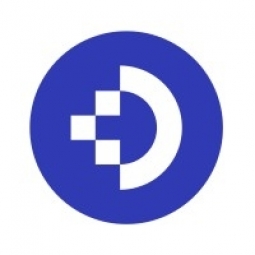下载PDF
HARIBO Streamlines Operations with DocuWare
技术
- 应用基础设施与中间件 - 数据交换与集成
适用行业
- 食品与饮料
适用功能
- 离散制造
- 人力资源
用例
- 资产生命周期管理
服务
- 系统集成
- 数据科学服务
挑战
HARIBO 是一家领先的水果软糖、甘草和泡沫糖产品制造商,需要在所有领域有效运作才能保持其全球市场地位。这需要使用现代文档管理系统。选择 DocuWare 的主要因素是易于集成到他们的 IBM System i (AS/400) 中,以及附近合作伙伴/系统公司的专业知识。他们的 DocuWare 合作伙伴面临着一个特殊的挑战:更换旧的 DMS 并尽可能顺利地迁移数百万个文档。新解决方案的需求概况定义明确。日常业务所需的所有文档(例如客户信函、交货单和发票、采购和物流文件以及工资会计记录)都需要集中采集,只需按一下按钮即可提供给授权员工。目的是以有意义的方式扩展和标准化既定的工作流程。进一步的目标包括扩大全球使用范围,同时将所有公司子公司连接到数字档案;简单的数据和文档迁移过程;以及自动索引所有文档。还需要确保从 ERP 应用程序直接获取存档文档。
关于客户
HARIBO 是全球领先的水果软糖、甘草糖和泡沫糖产品制造商。该公司于 1920 年在德国波恩成立。如今,他们在全球多个生产和销售地点拥有 7,000 名员工。除了旗舰产品 Gold Gummi Bears 之外,他们还拥有 MAOAM、Bären Schmidt 和 HARIBO Chamallows 品牌,这些品牌构成了该家族企业的产品系列。为了保持这样的全球市场地位,HARIBO 必须在所有领域有效运作,其中包括使用现代文档管理系统。
解决方案
所有部门都陆续转换到新的 DMS,而现有文档则从旧档案转移到 DocuWare。如今,物流、产品开发、采购和销售、质量保证和整个财务部门都与中央公司文档池相连。另一个重要的应用领域是人力资源部门,这意味着要处理特别敏感的数据。由于 DocuWare 具有特殊的高安全模式,该解决方案也满足了 IT 经理的要求。还使用了集成的工作流程,主要用于产品开发、营销、采购、生产、质量保证和研究实验室。这大大缩短了工作流程。每天,仅在波恩总部就有数千份文件以电子方式存档,其中大部分是多页文档。使用 ERP 解决方案创建的大量数据(例如列表、交货单和外发发票)在中央文档池中的存储是完全自动化的。DocuWare 支持数十种文档类型。纸质文件使用三台高性能扫描仪集中捕获,并由 DocuWare 自动归档。因此,工作人员可以随时调用和编辑对其区域重要的所有数据——搜索文件夹和覆盖办公室之间的长距离已成为过去。
运营影响
数量效益
相关案例.

Case Study
The Kellogg Company
Kellogg keeps a close eye on its trade spend, analyzing large volumes of data and running complex simulations to predict which promotional activities will be the most effective. Kellogg needed to decrease the trade spend but its traditional relational database on premises could not keep up with the pace of demand.

Case Study
HEINEKEN Uses the Cloud to Reach 10.5 Million Consumers
For 2012 campaign, the Bond promotion, it planned to launch the campaign at the same time everywhere on the planet. That created unprecedented challenges for HEINEKEN—nowhere more so than in its technology operation. The primary digital content for the campaign was a 100-megabyte movie that had to play flawlessly for millions of viewers worldwide. After all, Bond never fails. No one was going to tolerate a technology failure that might bruise his brand.Previously, HEINEKEN had supported digital media at its outsourced datacenter. But that datacenter lacked the computing resources HEINEKEN needed, and building them—especially to support peak traffic that would total millions of simultaneous hits—would have been both time-consuming and expensive. Nor would it have provided the geographic reach that HEINEKEN needed to minimize latency worldwide.

Case Study
Energy Management System at Sugar Industry
The company wanted to use the information from the system to claim under the renewable energy certificate scheme. The benefit to the company under the renewable energy certificates is Rs 75 million a year. To enable the above, an end-to-end solution for load monitoring, consumption monitoring, online data monitoring, automatic meter data acquisition which can be exported to SAP and other applications is required.

Case Study
Coca Cola Swaziland Conco Case Study
Coco Cola Swaziland, South Africa would like to find a solution that would enable the following results: - Reduce energy consumption by 20% in one year. - Formulate a series of strategic initiatives that would enlist the commitment of corporate management and create employee awareness while helping meet departmental targets and investing in tools that assist with energy management. - Formulate a series of tactical initiatives that would optimize energy usage on the shop floor. These would include charging forklifts and running cold rooms only during off-peak periods, running the dust extractors only during working hours and basing lights and air-conditioning on someone’s presence. - Increase visibility into the factory and other processes. - Enable limited, non-intrusive control functions for certain processes.

Case Study
Temperature Monitoring for Restaurant Food Storage
When it came to implementing a solution, Mr. Nesbitt had an idea of what functionality that he wanted. Although not mandated by Health Canada, Mr. Nesbitt wanted to ensure quality control issues met the highest possible standards as part of his commitment to top-of-class food services. This wish list included an easy-to use temperature-monitoring system that could provide a visible display of the temperatures of all of his refrigerators and freezers, including historical information so that he could review the performance of his equipment. It also had to provide alert notification (but email alerts and SMS text message alerts) to alert key staff in the event that a cooling system was exceeding pre-set warning limits.

Case Study
Coca-Cola Refreshments, U.S.
Coca-Cola Refreshments owns and manages Coca-Cola branded refrigerators in retail establishments. Legacy systems were used to locate equipment information by logging onto multiple servers which took up to 8 hours to update information on 30-40 units. The company had no overall visibility into equipment status or maintenance history.





